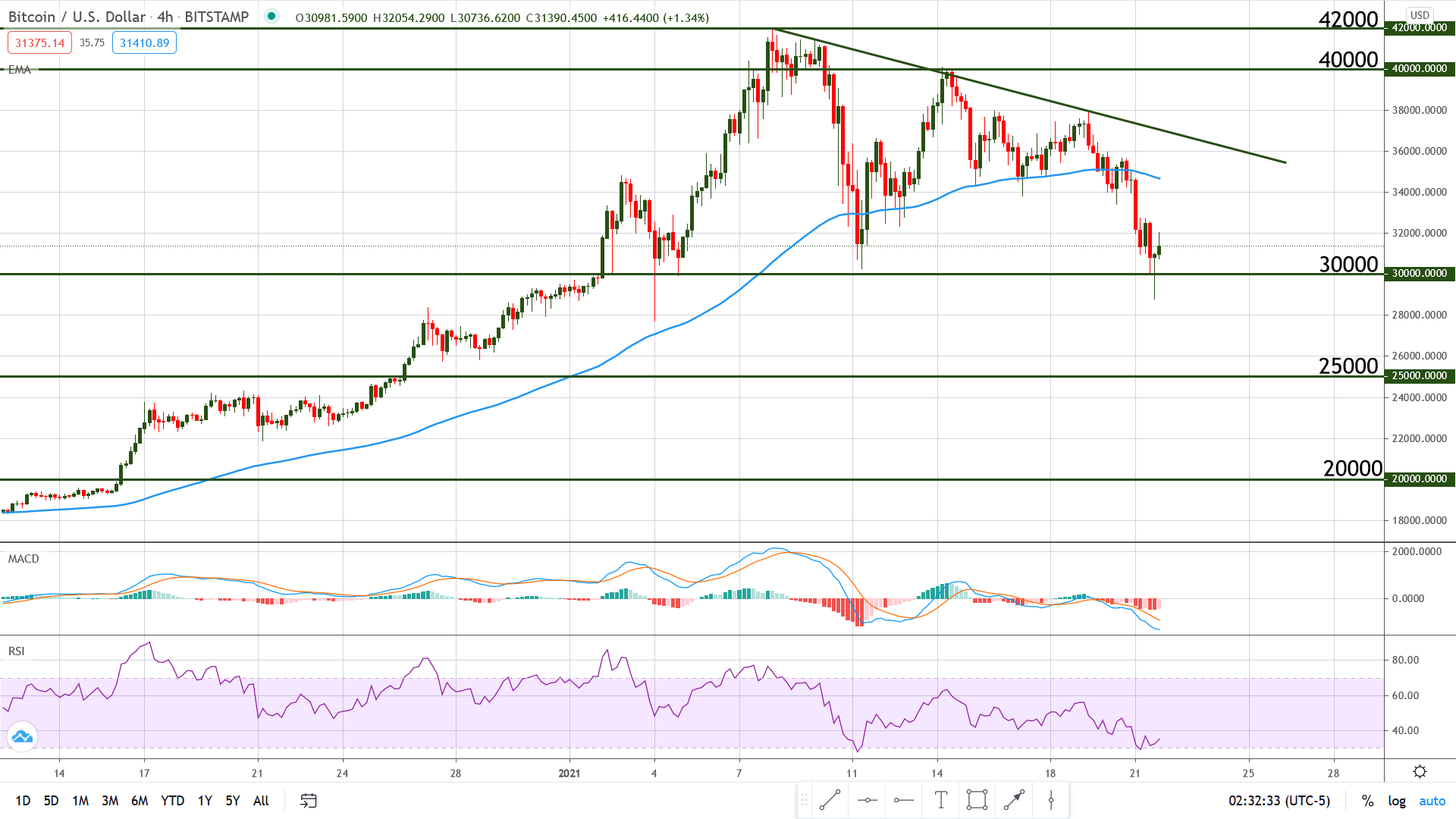Bitcoin Recovers After Block Reorganization
The Story of the 21 Bucks and the FUD It Created
FUD: Fear. Uncertainty. Doubt. It can be triggered by the weirdest reasons and it can lead to massive selloffs. As we are all watching the Bitcoin charts going down, some of you may wonder about the reason. Here it is: yesterday, 21 January 2021, a person sent $21 to another person, which resulted in more than $80 Billion being wiped from Bitcoin’s market cap. Panic quickly crept in and Bitcoin’s price dropped by more than 10%. Now let’s see what really happened.
At block 666833, two conflicting transactions of $21 occurred, which was considered by some double-spending. However, the blockchain operated as it was supposed to and the “bad” block was rejected, with only 1 confirmation, while the “good” one was spread throughout the network (more than 100 confirmations). In other words, this wasn’t double-spending but rather a normal reorganization of the blockchain.
Although this is not a typical event, it isn’t something unheard of and in fact, it can be considered quite normal. As Andreas Antonopoulos explained, a 1-block reorganization occurs on average once every two weeks. A 2-block reorganization is less common, occurring once a year or so, while a 3-block reorganization has not happened in the history of the BTC blockchain. This is why we need 3 confirmations for a BTC transaction to be considered valid.
But even if this was a normal reorganization, which actually proved once again that Bitcoin works as it should, some publications amplified the importance of the event and made it sound like double-spending. The masses (especially new investors) panicked and rushed to sell their digital assets, which led to a snowball effect and lower prices.
Chart Analysis – BTC/USD
Bitcoin is currently trading at $31,409 and lost more than 19% over the last 7 days, according to CoinMarketCap. A pullback was anticipated due to technical reasons and the overextension of the last move up, but it was exacerbated by the “21 bucks panic” and now Bitcoin is in danger of moving below the key support at $30,000.
On the 4-hour chart below, we can note a pin bar that formed on support, which is a sign of rejection. However, the pair is trading below the 100 periods Exponential Moving Average and below a downtrend line, which are both bearish signs.
If the support zone around $30,000 falls, the pair is likely to descend lower, into the $25,000 area. Even if price bounces higher from the current level, BTC will begin to resume the uptrend only after it moves above the 100 periods EMA and the bearish trend line.
